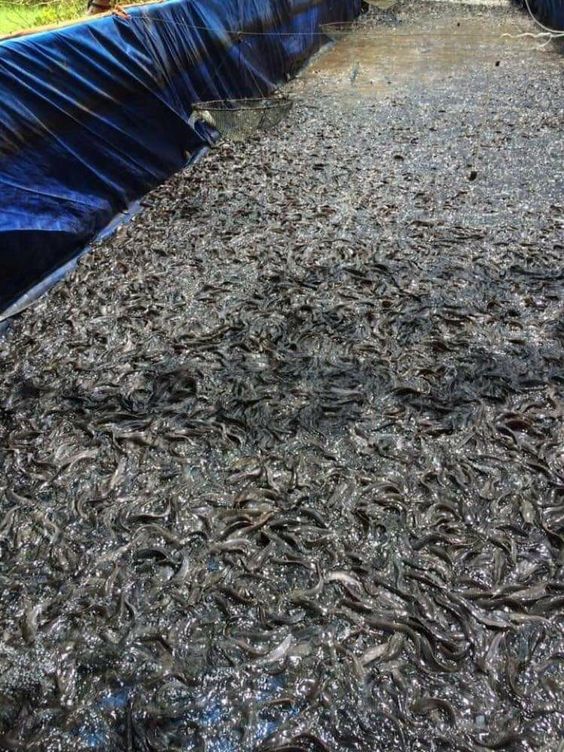Handling Fish for Market: Best Practices for Quality and Sustainability in 2024
Handling fish for market is a critical aspect of the fishing industry, encompassing practices from catch to sale. The methods and strategies used during this process significantly impact the quality, safety, and profitability of the fish, making it a vital component of the supply chain. Proper fish handling is essential to ensure that the fish retain their freshness, nutritional value, and appeal to consumers. Whether fish are sourced from the ocean, lakes, or fish farms, the way they are handled can also influence environmental sustainability, reducing waste and minimizing negative effects on ecosystems.
Handling fish for market involves a wide range of activities, including the capture, processing, storage, and transportation of fish. Each step must be carefully managed to ensure that the product remains fresh and safe for consumption. With growing global demand for seafood and the increasing focus on sustainable fishing practices, the importance of efficient fish handling has never been more significant. In this article, we will explore the key aspects of handling fish for market, discuss the benefits and goals of proper fish handling, and offer suggestions for how businesses can improve their practices to maximize the quality and sustainability of their products.
Contents
The Benefits of Proper Fish Handling
Handling fish correctly from the moment they are caught or harvested can result in numerous benefits for both the seller and the consumer. These advantages range from increased profitability to enhanced food safety and better environmental stewardship.
1. Maintaining Quality and Freshness
Freshness is a key selling point for fish. Fish that are mishandled or stored improperly can quickly spoil, losing their taste, texture, and nutritional value. By employing best practices in handling fish for market, sellers can ensure that their products remain fresh, resulting in higher consumer satisfaction. Fresh fish not only taste better, but they also contain higher levels of omega-3 fatty acids, which are beneficial for heart health.
2. Reducing Waste
Improper fish handling often leads to high levels of spoilage, which contributes to food waste. Globally, a significant amount of seafood is wasted due to poor handling and storage practices. By focusing on proper handling techniques, businesses can reduce waste, cut costs, and contribute to global efforts to reduce food insecurity.
3. Enhancing Food Safety
The seafood industry is subject to strict regulations regarding food safety, and mishandling fish can lead to contamination and foodborne illnesses. Fish that are exposed to warm temperatures, unclean environments, or improper handling techniques may become contaminated with harmful bacteria. Proper handling and storage of fish can minimize the risk of foodborne diseases and ensure compliance with food safety regulations.
4. Improving Profitability
Handling fish for market efficiently can lead to higher profits for sellers. By maintaining quality and reducing waste, businesses can command higher prices for their products. Additionally, consumers are willing to pay a premium for fresh, sustainably caught seafood, further boosting profitability.
5. Promoting Sustainability
Sustainable fish handling practices are becoming increasingly important as consumers become more environmentally conscious. Businesses that adopt sustainable practices, such as reducing waste and minimizing the environmental impact of fishing and fish farming, can appeal to this growing market segment. Additionally, sustainable practices help to preserve fish populations and protect marine ecosystems, ensuring the long-term viability of the fishing industry.

Goals of Proper Fish Handling
Effective fish handling has several key goals, all aimed at preserving the quality, safety, and sustainability of the product. These goals include:
1. Preserving Freshness and Shelf Life
One of the primary goals of handling fish for market is to preserve its freshness and extend its shelf life. Fish are highly perishable, and without proper care, they can spoil quickly. By using techniques such as immediate cooling, proper storage, and rapid processing, businesses can maximize the shelf life of their products, reducing the risk of spoilage and waste.
2. Ensuring Food Safety
Maintaining food safety is a top priority in the seafood industry. Fish can easily become contaminated if they are not handled and stored correctly. Proper handling practices aim to minimize the risk of contamination from bacteria, parasites, and other pathogens. This includes maintaining proper hygiene throughout the supply chain and ensuring that fish are kept at safe temperatures.
3. Reducing Post-Harvest Losses
Post-harvest losses in the seafood industry are significant, with a large percentage of the catch being lost due to spoilage, damage, or contamination. Proper fish handling techniques aim to minimize these losses, ensuring that as much of the catch as possible reaches the market in good condition. This not only improves profitability but also reduces waste and supports sustainability efforts.
4. Protecting the Environment
Sustainable fish handling practices are essential for protecting the environment and preserving marine ecosystems. Overfishing, pollution, and improper disposal of fish waste can have devastating effects on the environment. Businesses that handle fish sustainably can help to reduce their environmental footprint and contribute to the long-term health of the oceans.
5. Meeting Consumer Demand for Quality and Sustainability
Consumers are increasingly demanding high-quality, sustainably sourced seafood. Proper fish handling practices help businesses meet this demand by ensuring that their products are fresh, safe, and environmentally friendly. This can lead to increased customer loyalty, higher sales, and a stronger brand reputation.

Key Ideas for Handling Fish for Market
To achieve these goals, businesses must adopt a range of strategies and best practices for handling fish from the moment they are caught or harvested to the point of sale. Below are some key ideas for improving fish handling for market:
1. Rapid Cooling and Icing
One of the most effective ways to preserve fish freshness is by rapidly cooling them after they are caught. Fish should be placed on ice or in refrigerated storage as soon as possible to prevent the growth of bacteria and slow the process of spoilage. In tropical climates, fish can spoil in just a few hours if they are not properly cooled, so immediate icing is critical.
2. Proper Handling Techniques
Fish are delicate and can be easily damaged during handling. Bruising or cutting the flesh can reduce the quality of the fish and make it less appealing to consumers. To avoid this, fish should be handled gently and carefully throughout the entire supply chain, from the moment they are caught to when they are processed and transported.
3. Hygienic Processing Environments
Maintaining a clean and hygienic environment is crucial to ensuring food safety. Fish should be processed in clean facilities that meet food safety standards, with workers following proper hygiene protocols. This includes regular handwashing, wearing clean protective clothing, and ensuring that equipment is sanitized regularly.
4. Vacuum Packaging and Freezing
For longer-term storage, vacuum packaging and freezing are effective ways to preserve fish quality. Vacuum-sealing fish removes air from the packaging, which helps to prevent spoilage and freezer burn. Freezing fish at low temperatures can extend its shelf life for months while maintaining its flavor and nutritional value.
5. Sustainable Fishing and Farming Practices
Sustainability is becoming an increasingly important factor in the seafood industry. Businesses should strive to adopt sustainable fishing and farming practices, such as reducing bycatch, avoiding overfishing, and using environmentally friendly aquaculture methods. Sustainable practices not only protect the environment but also appeal to consumers who are looking for eco-friendly seafood options.
6. Efficient Transportation and Cold Chain Management
Proper transportation is a critical part of handling fish for market. Fish should be transported in refrigerated vehicles to ensure that they remain at safe temperatures throughout the journey. Cold chain management is essential to maintaining fish quality, from the point of capture or harvest to the market or retail outlet.
Topic Suggestions for Further Exploration
Handling fish for market is a broad topic that encompasses a wide range of areas, from sustainability to food safety. Below are some topic suggestions for further exploration:
1. The Role of Technology in Fish Handling
Explore how technology is transforming the way fish are handled, from automated processing equipment to real-time monitoring systems that track temperature and quality during transportation.
2. Sustainable Fish Farming Practices
Handling Fish for Market,Discuss the latest developments in sustainable aquaculture and how fish farms are adopting eco-friendly practices to reduce their environmental impact.
3. Food Safety Regulations in the Seafood Industry
Handling Fish for Market,Examine the various food safety regulations that govern the seafood industry, including how businesses can ensure compliance and the consequences of non-compliance.
4. The Impact of Climate Change on Fish Handling
Handling Fish for Market,Analyze how climate change is affecting fish populations, fishing practices, and the handling of fish for market, particularly in regions that are experiencing warmer temperatures and changing ecosystems.
5. Innovations in Cold Chain Management
Handling Fish for Market,Look into the latest innovations in cold chain management for seafood, such as new packaging materials and refrigeration technologies that help maintain fish freshness during transportation.
6. Reducing Post-Harvest Fish Losses
Handling Fish for Market,Explore strategies for reducing post-harvest fish losses, including improved handling techniques, better storage facilities, and innovations in processing and packaging.
Advantages of Proper Fish Handling
Handling fish for market effectively offers numerous advantages for businesses, consumers, and the environment. These advantages are not limited to short-term financial gains but also encompass long-term sustainability and public health benefits.
1. Better Product Quality
Handling Fish for Market,Proper handling techniques ensure that fish are of the highest quality when they reach the consumer. This can result in better-tasting fish, a more appealing texture, and higher nutritional value, which can translate into higher sales and customer satisfaction.
2. Extended Shelf Life
Handling Fish for Market By following best practices in fish handling, businesses can extend the shelf life of their products, reducing spoilage and waste. This allows for more flexibility in terms of distribution and sales, as well as increased profitability.
3. Improved Brand Reputation
Handling Fish for Market,Companies that prioritize quality and sustainability in their fish handling practices are more likely to earn the trust and loyalty of consumers. This can enhance the company’s brand reputation and lead to repeat business, as consumers become more aware of the importance of buying fresh, sustainable seafood.
4. Enhanced Food Safety
Handling fish properly reduces the risk of foodborne illnesses and contamination, promoting public health and safety. Businesses that adhere to food safety standards not only protect their customers but also avoid potential legal issues and financial losses associated with food safety violations.
5. Positive Environmental Impact
Handling Fish for Market,Sustainable handling practices contribute to the health of marine ecosystems and fish populations. By minimizing waste and adopting eco-friendly methods, businesses can play a significant role in conservation efforts, helping to ensure that fish stocks remain viable for future generations.
6. Increased Consumer Awareness
Handling Fish for Market As consumers become more educated about the impact of their purchasing decisions, they are increasingly inclined to support businesses that prioritize quality and sustainability. By adopting proper fish handling practices, companies can cater to this demand, leading to increased market share and customer loyalty.
7. Competitive Advantage
Handling Fish for Market In a competitive market, businesses that invest in quality handling and sustainable practices can differentiate themselves from their competitors. This competitive edge can be crucial in attracting and retaining customers who value high-quality seafood products.

Best Practices for Handling Fish for Market
To fully capitalize on the benefits of proper fish handling, businesses should adopt a comprehensive approach that incorporates best practices at every stage of the supply chain. Here are some key practices to implement:
1. Training and Education
Handling Fish for Market,Training staff on proper fish handling techniques is essential for maintaining quality and safety. Regular workshops and training sessions can help ensure that all employees understand the importance of handling fish correctly and are familiar with the latest industry standards and regulations.
2. Implementing Standard Operating Procedures (SOPs)
Handling Fish for Market,Developing and implementing SOPs for fish handling can help standardize practices across the organization. SOPs should cover everything from catch handling and processing to storage and transportation, ensuring consistency and compliance with food safety regulations.
3. Monitoring and Record-Keeping
Handling Fish for Market,Maintaining detailed records of fish handling practices is essential for traceability and quality assurance. Monitoring temperature, handling procedures, and processing times can help identify areas for improvement and ensure that all practices meet industry standards.
4. Engaging with Suppliers and Partners
Handling Fish for Market,Collaboration with suppliers and transportation partners is crucial for maintaining the integrity of the cold chain. Regular communication and partnership can help ensure that everyone involved in the supply chain is committed to adhering to proper fish handling practices.
5. Using Quality Packaging Materials
Handling Fish for Market,Investing in high-quality packaging materials can significantly impact fish freshness and safety. Packaging should be designed to protect fish from contamination and physical damage while also maintaining optimal temperature and humidity levels.
6. Conducting Regular Audits
Handling Fish for Market,Regular audits of fish handling practices can help identify areas for improvement and ensure compliance with food safety standards. These audits should include assessments of facilities, equipment, and employee practices.
7. Encouraging Consumer Education
Handling Fish for Market,Educating consumers about the importance of proper fish handling can help foster a culture of quality and sustainability. Businesses can provide information on how to select, store, and prepare fish to maximize freshness and safety, helping to build a more informed customer base.
Handling fish for market is a multifaceted process that requires careful attention to quality, safety, and sustainability. By implementing best practices throughout the supply chain, businesses can ensure that their fish products remain fresh, safe, and appealing to consumers. The benefits of proper fish handling extend beyond immediate financial gains, impacting public health, environmental sustainability, and overall consumer satisfaction.






